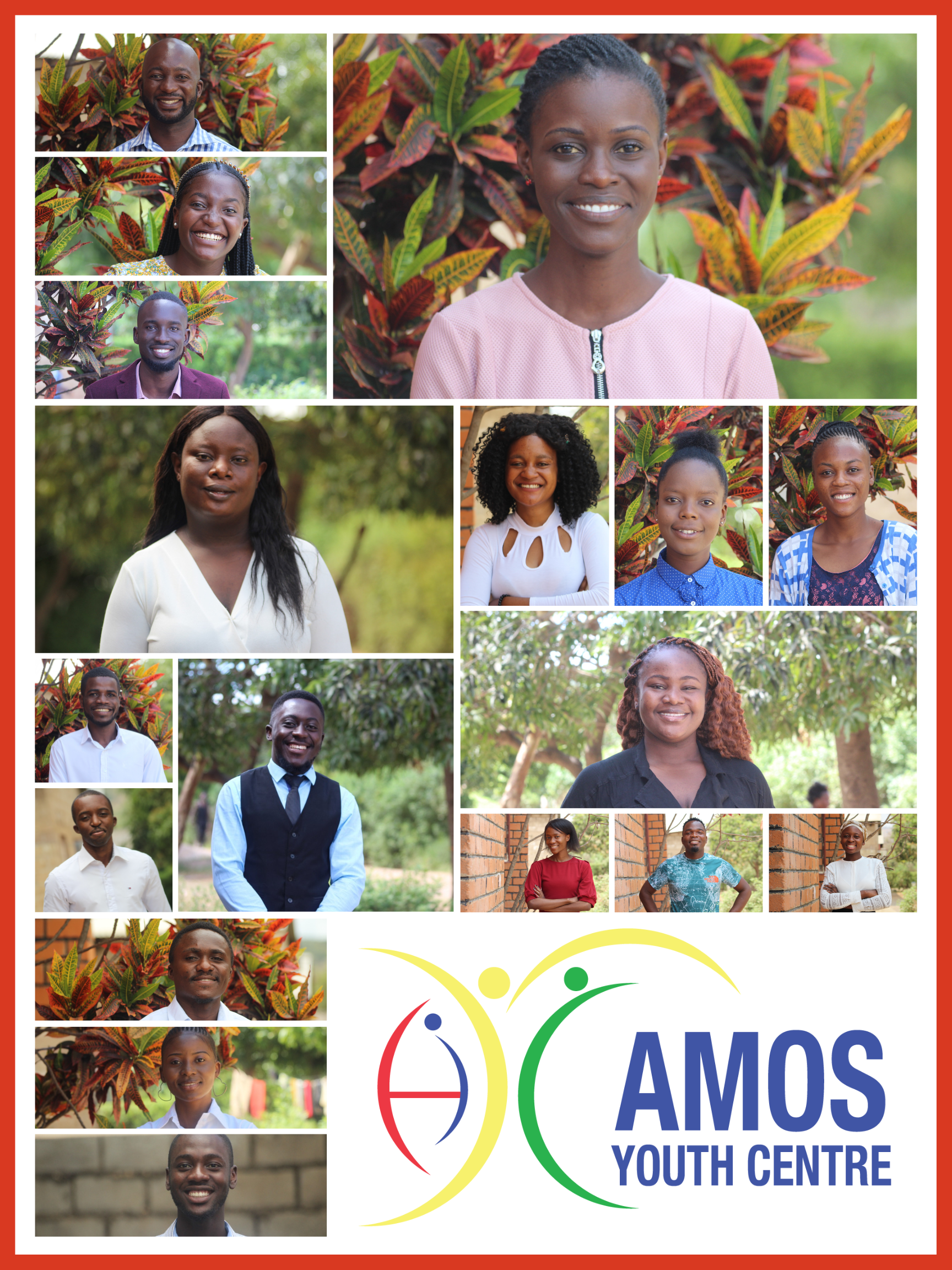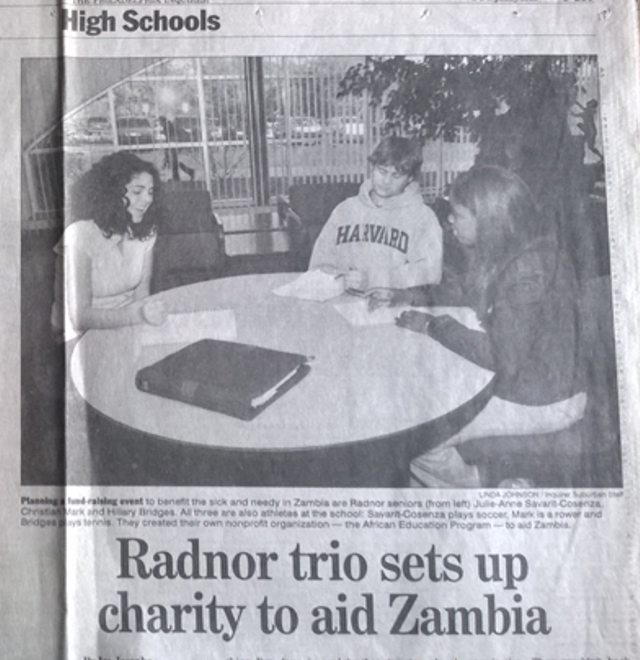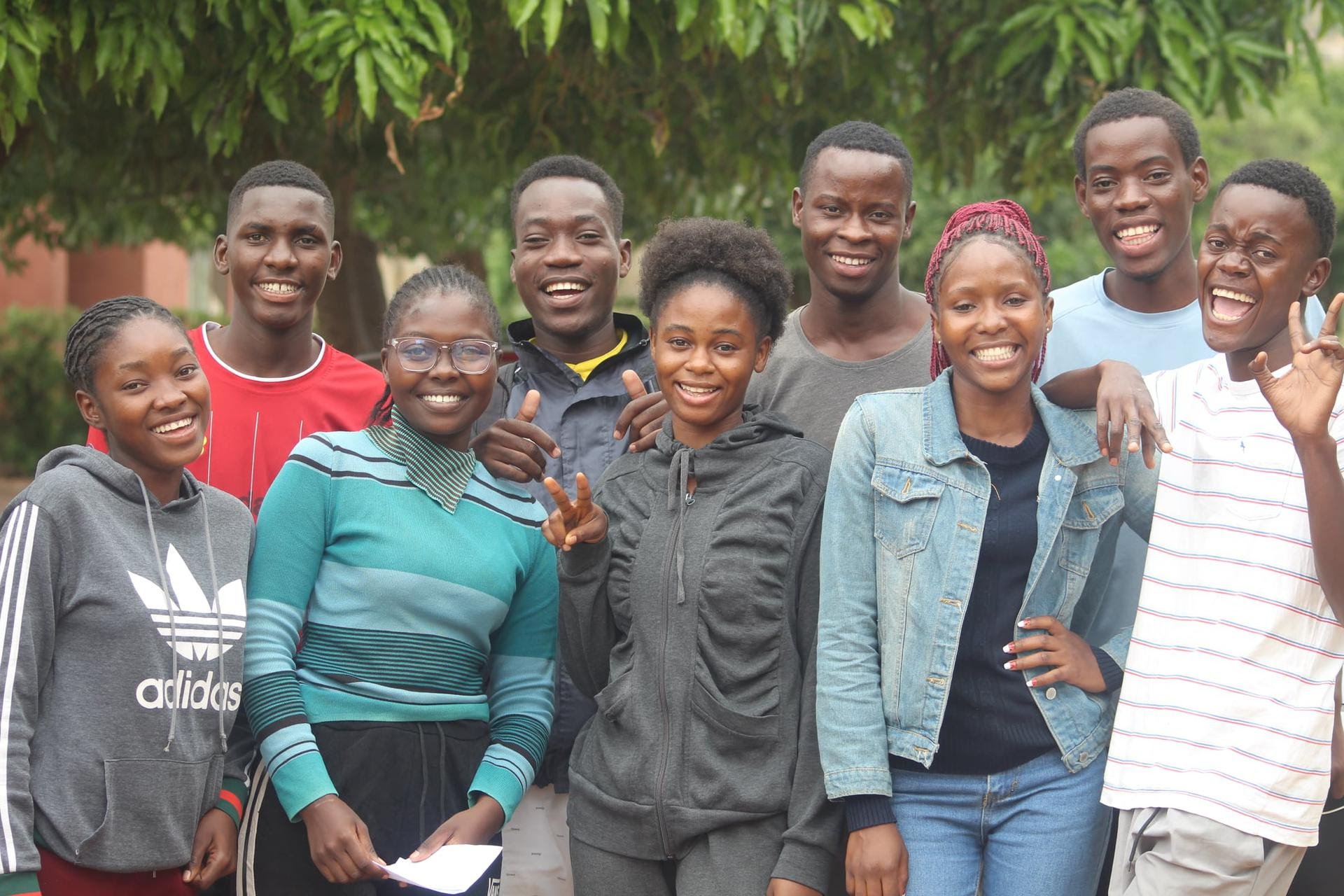How We Reached Today.
Julie-Anne Savarit-Cosenza is one of the co-founders and the Executive Director of the African Education Program.
She is a recognized community leader by the M. Night Shyamalan Foundation and an alumni of the Gratitude Network Fellowship. Today, she shares more about the evolution of the African Education Program and the Amos Youth Centre.
It's day two in the lead-up to the launch of the African Education Program's new "look!" Today, we are diving into our past and what brought the organization to where we are now.
Some may remember, in August 2006, as African Education Program volunteers, my mom (Board Member Marie-Odile Savarit, but better known as Momma Mario) and I traveled for a second time to Kafue, Zambia. With community leaders and youth members, we opened the organization’s flagship Learning & Leadership Center, named Amos Youth Centre.
At first, volunteers oversaw the center and only twenty or thirty students utilized the resources. Today, a full-time team of eighteen makes it possible for over seven hundred children and youth to access unique programs at the center daily.
Entrance of the Amos Youth Centre's first space for learning activities. A second space is now rented for administration, monitoring and evaluation and clubs. A third space houses the Read for Rose Special Education Program. Two houses are also rented for volunteers.
Until today, the African Education Program and the Amos Youth Centre have been intimately entwined in terms of identity and work. Our joint mission—to empower the youth of Zambia through education and leadership development to break the cycle of poverty in their communities. Together, we developed over a dozen programs focused on quality learning, health and wellbeing, entrepreneurship, and leadership development. These are the programs that, today, over 700 children and youth access daily.
Over the years, we strategically did two things to bolster supporter confidence in our work and make it easier to understand our multi-faceted approach.
First, we transitioned away from using the name Amos Youth Centre. Supporters often thought the African Education Program had founded a school, so youth center in the name caused confusion.
We instead focused on naming our effort the African Education Program’s after-school youth learning center and then Learning & Leadership Center. While streamlining eased confusion, it took away from the local Zambian team’s ownership of the incredible work on the ground.
Secondly, we created a system of direct sponsorship. A supporter could directly contribute toward the education of a child and would have the opportunity to correspond twice per year.
Over the last six years, the work of the African Education Program intentionally shifted away from this direct work with Zambian youth to building the capacity of the local team of the Amos Youth Centre. We focused on leadership development, as well as technical and operational assistance. We also created an ecosystem of partner organizations that have been a part of this effort.
Photo collage of the entire Amos Youth Centre team.
As this new work continued, what we realized was that a unique model was in the making, the Learning & Leadership Center Model. Amos Youth Centre is the flagship of this model and its many components have been refined over the years with the Zambian team. The African Education Program’s goal is to package the model for replication elsewhere.
Today, the Amos Youth Centre is a locally-led and youth-driven community-based organization–from a majority Zambian board actively focused on governance, to an alumni driven team spearheading programs, to the girls, boys, young women and men not just taking advantage of programs, but taking active roles and giving back to their community.
The final missing component is financial sustainability. The Amos Youth Centre is still 99% dependent on the funds raised by the African Education Program.
Our goal is to complete the Learning & Leadership Center Model with financial sustainability. This includes diversifying revenue streams, including income generation.
In addition, giving trends in the international development community are positively changing toward community-based organizations (away from large international organizations), so there is a need to have the Amos Youth Centre’s identity, work, and ownership stand alone.
After achieving financial independence, the Amos Youth Centre will not only be community-led, but community-owned.
Many of you took a leap of faith with us when we were still in high school, well over 15 years ago. Today, supporters still include the parents of my friends from high school in the close knit Main Line community outside of Philadelphia, as well as my extended family members and friends both here in the U.S. and in France.
Not too many nonprofits can say that they know most of their supporters to the second degree. We can.
The closeness of the African Education Program Family has long been a strength and will always remain a unique part of who we are.
As we continue to unveil our new branding and messaging, we ask for your trust. The African Education Program has been growing up for the last 18 years and has transitioned to adulthood. Today, we are more clear than ever about who we are, what we do, and where we want to go.
So who is the African Education Program today? We will always value the empowerment of an individual child. Now, we leave this work in the capable hands of the Amos Youth Centre team. Our focus will continue to be on building and growing the capacity of the Amos Youth Centre team, but also on completing the Learning & Leadership Center Model.
Newspaper clipping from the Philadelphia Inquirer about the African Education Program's founding at Radnor High School.
And as we seek to grow our impact, we will also place deep value on systemic change, with a larger, more ambitious outlook to build a strong culture of ambition and accountability, empowering even more young changemakers and leaders in Africa.
This may feel very different from the way we have communicated in the past. But the essence of who we are, the impact we have, and the transformative change we seek to create remains the same.
What also remains the same is how valuable you are to the African Education Program. And I could not be more excited to take the next step of this journey together!







